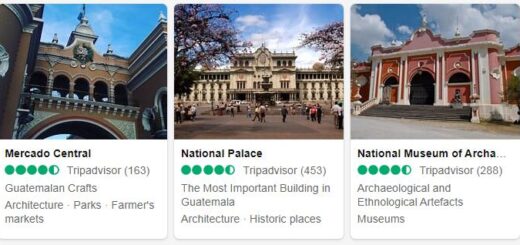Canada 2018
In 2018, Canada had a population of approximately 37 million people. The economy is largely based on services, with manufacturing and natural resources also making up a significant portion of the GDP. Oil is the main export, while wheat and timber are also important exports. English and French are both official languages although other languages such as Cree and Inuktitut are also spoken. According to extrareference, Canada is a parliamentary democracy with an executive branch headed by the Prime Minister who is elected for a five year term. The legislative branch consists of a bicameral parliament (the Senate and the House of Commons). In terms of foreign relations, Canada maintains diplomatic ties with over 120 countries around the world and has close ties with its neighbors in North America such as the United States and Mexico. The government also works closely with international organizations such as the United Nations, North Atlantic Treaty Organization (NATO), World Bank, International Monetary Fund (IMF), World Trade Organization (WTO) and G7/G8.
Yearbook 2018
Canada. Ten people were killed and at least 15 injured when a van drove pedestrians on a sidewalk in Toronto in April. The UN reported at the beginning of the year that nearly 3,500 civilians had been killed in the conflict in Afghanistan in 2016. According to Countryaah.com, Ottawa is the capital city of Canada, a country located in North America. The attack, which could not be linked to terrorism, was one of several notable acts of violence in the spring. In May, 15 people were injured in an attack on an Indian restaurant in the city of Mississauga west of Toronto, and in July two people were shot dead and 13 injured by a man who opened fire on a restaurant bar in Greektown, Toronto. According to media data in July, more than 200 shootings had taken place in Toronto since the beginning of the year. The data led Prime Minister Justin Trudeau to order an investigation into the possibility of an absolute ban on small arms.
- According to Abbreviationfinder: CDA is an three letter acronym for Canada.
In June, the US imposed tariffs of 25% and 10% respectively on steel and aluminum from Canada, the EU and Mexico. According to the US, the purpose was to protect the country’s national security. Customs brought strong reactions. At a press conference, Prime Minister Trudeau said they were “totally unacceptable” and violated the WTO rules. He also said that the US national security argument was a snub against the long-standing security cooperation of the two neighboring countries.
The same month, a two-day G7 ministerial meeting was held in the Canadian province of Quebec. During the meeting, six of the ministers from the group’s seven member countries criticized the US and its steel tariffs, which they believed risked “undermining economic confidence”. Nevertheless, the meeting ended with a joint communique in which, for example, the leaders promised to fight protectionism. But hardly had the deal been made public until US President Donald Trump tweeted that he was withdrawing his signature. The reason was that he was upset over statements made by Trudeau during a press conference after the G7 meeting, when the prime minister threatened to impose penalties on the United States. On Twitter, President Trump accused Prime Minister Trudeau of being “lying and weak.”
In June, Canada legalized cannabis for everyday use. Thus, the country was the second in the world after Uruguay to completely allow cannabis for production, sales, holdings and consumption. The law came into force on October 17, imposing some restrictions similar to those found for alcohol. According to Prime Minister Trudeau, the change in the law was a way to access the black market, while Finance Minister Bill Morneau hoped for $ 400 million in new tax revenue.
During the summer, Canada introduced duties on upwards of 250 US goods, including for ketchup, orange juice and whiskey. The duties corresponded to a value of US $ 12.6 billion. In addition, a support package for the domestic steel and aluminum industry of USD 1.5 billion would be introduced.
A heat wave in the Montreal area claimed 54 lives in July.
A diplomatic battle between Canada and Saudi Arabia erupted in August after Canadian Foreign Minister Chrystia Freeland criticized Saudi Arabia’s arrest of several female human rights activists. Among the activists was Samar Badawi, sister of imprisoned blogger Raif Badawi, whose wife and children live in Canada. On Twitter, Freeland called on Saudi Arabia to release the activists, after which Saudi Arabia severed all ties with Canada. Saudi Arabia expelled Canadian diplomats and withdrew their own from Canada. In addition, thousands of Saudi scholars were moved from Canadian education, medical exchanges were stopped and ongoing business with Canada was canceled.
Under the NAFTA agreement, the US and Mexico agreed on a renewed partial agreement at the end of August.
Following the agreement, the US began intensive consultations with Canada, which led Canada to join a new trilateral agreement in October called the United States-Mexico-Canada Agreement (USMCA). For Canada, the settlement meant, among other things, that the United States would have greater access to the Canadian dairy market. At the same time, a clause that would allow Canadian companies to have future barriers to trial by an arbitration court would be retained – something the United States opposed. Before the agreement could come into force, the congresses of the three countries must ratify it.
In December, Canada-China relations deteriorated since Canada, at the request of the United States, arrested Huawei’s chief Meng Wanzhou. Later that month, Canadians Michael Kovrig and Michael Spavo were arrested in China. The two men were suspected by China of activities that threatened the country’s national security.


